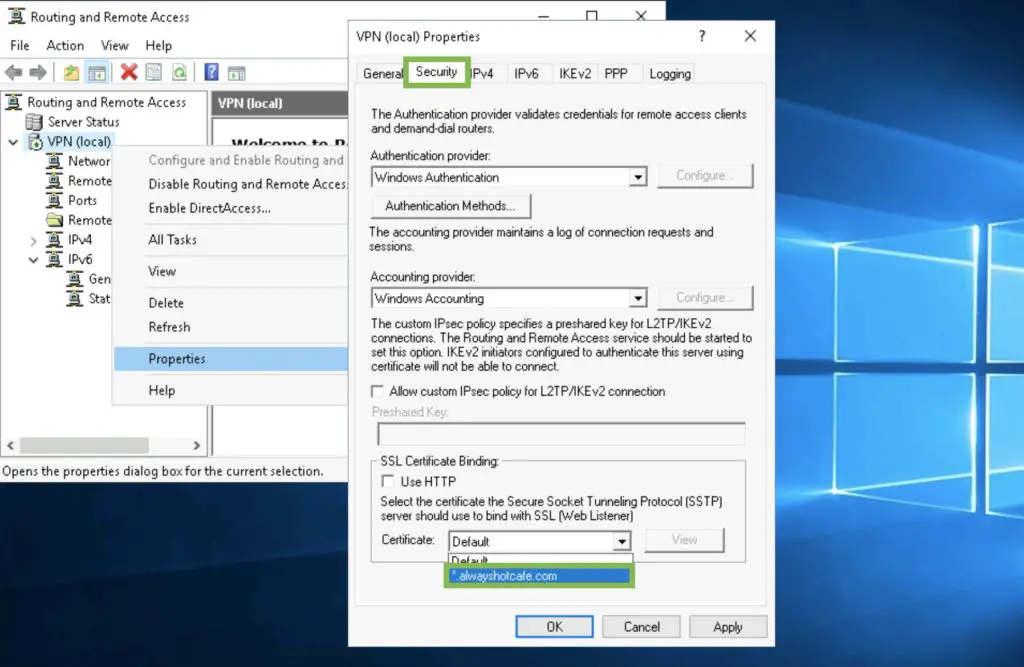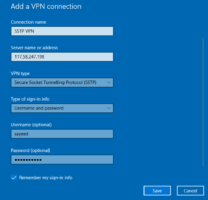Free FTP client software for Windows Now you can download Core FTP LE - free Windows software that includes the client FTP features you need. Features like SFTP (SSH), SSL, TLS, FTPS, IDN, browser integration, site to site transfers, FTP transfer resume, drag and drop support, file viewing & editing, firewall support, custom commands, FTP URL parsing, command line transfers, filters, and much. Some clients don’t have scheduling capabilities, or can’t transfer files larger than 2GB. Below are essential criteria that you need to consider when looking for an FTP or SFTP client for Windows. Supported File Transfer Protocols. Regardless of your requirements, you may need something more than just FTP. Jul 22, 2018 Hi everyone, I have quite large a base of Windows 10 computers that connect to an Azure VNet via an SSTP Point-to-Site VPN. The problem is that the VPN connection on one of these computers broke right after the weekly round of Windows updates were automatically installed last Wednesday.
-->Applies to Windows Server 2019, Windows 10: Windows Server 2022,
OpenSSH is a connectivity tool for remote login that uses the SSH protocol. It encrypts all traffic between client and server to eliminate eavesdropping, connection hijacking, and other attacks.

OpenSSH can be used to connect Window 10 (build 1809 and later) or Windows Server 2019 devices with OpenSSH Client installed to those devices with OpenSSH Server installed.
Important
If you downloaded OpenSSH from the GitHub repo at PowerShell/openssh-portable, follow the instructions listed there, not the ones in this article.
Install OpenSSH using Windows Settings
Both OpenSSH components can be installed using Windows Settings on Windows Server 2019 and Windows 10 devices.
To install the OpenSSH components:
Open Settings, select Apps > Apps & Features, then select Optional Features.
Scan the list to see if the OpenSSH is already installed. If not, at the top of the page, select Add a feature, then:
- Find OpenSSH Client, then click Install
- Find OpenSSH Server, then click Install
Once setup completes, return to Apps > Apps & Features and Optional Features and you should see OpenSSH listed.
Windows Sstp Client Change Port
Note
Installing OpenSSH Server will create and enable a firewall rule named OpenSSH-Server-In-TCP. This allows inbound SSH traffic on port 22. If this rule is not enabled and this port is not open, connections will be refused or reset.
Windows Sstp Client Windows 7
Install OpenSSH using PowerShell
To install OpenSSH using PowerShell, run PowerShell as an Administrator.To make sure that OpenSSH is available, run the following cmdlet:
This should return the following output if neither are already installed:
Then, install the server or client components as needed:
Both of these should return the following output:
Start and configure OpenSSH Server
To start and configure OpenSSH Server for initial use, open PowerShell as an administrator, then run the following commands to start the sshd service:
Connect to OpenSSH Server
Once installed, you can connect to OpenSSH Server from a Windows 10 or Windows Server 2019 device with the OpenSSH client installed using PowerShell as follows. Be sure to run PowerShell as an administrator:
Windows Sstp Client Mac
Once connected, you get a message similar to the following:
Selecting yes adds that server to the list of known SSH hosts on your Windows client.
You are prompted for the password at this point. As a security precaution, your password will not be displayed as you type.
Once connected, you will see the Windows command shell prompt:
Uninstall OpenSSH using Windows Settings

To uninstall OpenSSH using Windows Settings:
- Open Settings, then go to Apps > Apps & Features.
- Go to Optional Features.
- In the list, select OpenSSH Client or OpenSSH Server.
- Select Uninstall.

Uninstall OpenSSH using PowerShell
To uninstall the OpenSSH components using PowerShell, use the following commands:
You may need to restart Windows afterwards if the service was in use at the time it was uninstalled.